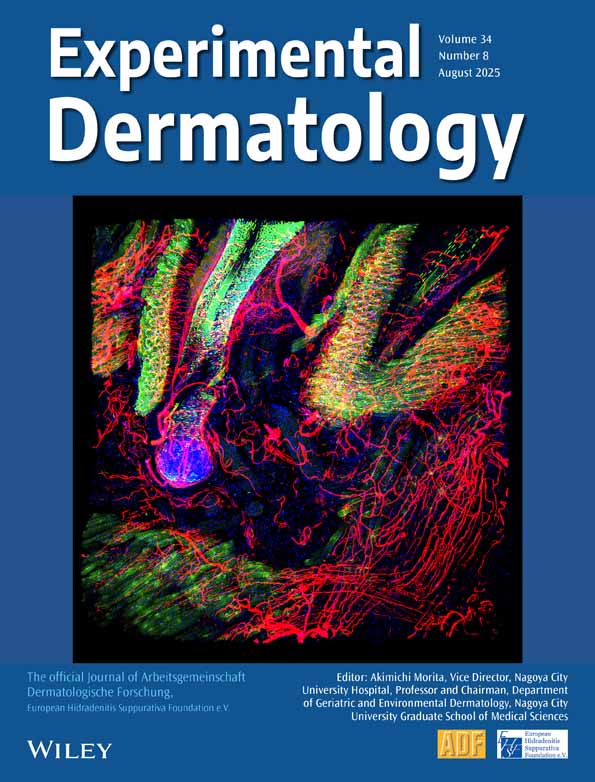Corticotropin-releasing hormone skin signalling is receptor mediated and is predominant in the sebaceous glands
Abstract
There is increasing evidence that the sebaceous gland is involved in responses to stress-expressing receptors for several neuropeptides. Among them, corticotropin-releasing hormone (CRH), a hypothalamus-derived peptide was currently found to also be produced in the skin. Urocortin, urotensin and sauvagine are recently described members of the family of structurally related CRH-like peptides, with urocortin sharing a 45% homology to CRH. To better understand the effects of CRH and CRH-like peptides on skin cells, the distribution of CRH, CRH receptors I and II as well as CRH-binding protein in cultured skin cells was determined. Moreover, the effects of CRH and CRH-like peptides on proliferation and inflammatory signalling of CRH receptors-expressing skin cells in vitro were investigated. While native keratinocytes and SZ95 sebocytes expressed CRH, CRH-binding protein, and both CRH receptors, endothelial cells did not express any of these molecules. There was a cell-specific effect regarding cell proliferation. While CRH and urocortin inhibit SZ95 sebocyte growth, we could not observe such effect on HaCaT keratinocytes. Urotensin and sauvagine were inactive on both cell types. CRH and urocortin stimulated interleukin-6 and interleukin-8 release from SZ95 sebocytes, but they exhibited no effect on interleukin-1α and -β release. α-helical CRH, a CRH antagonist, annulled the CRH effect, but not that of urocortin, on SZ95 sebocyte proliferation and interleukin synthesis. In conclusion, CRH, and to less extend urocortin, is likely to play a major role on the signalling of stress pathophysiology in the skin. The sebaceous gland is more likely to be the CRH activity regulation centre in human skin.




